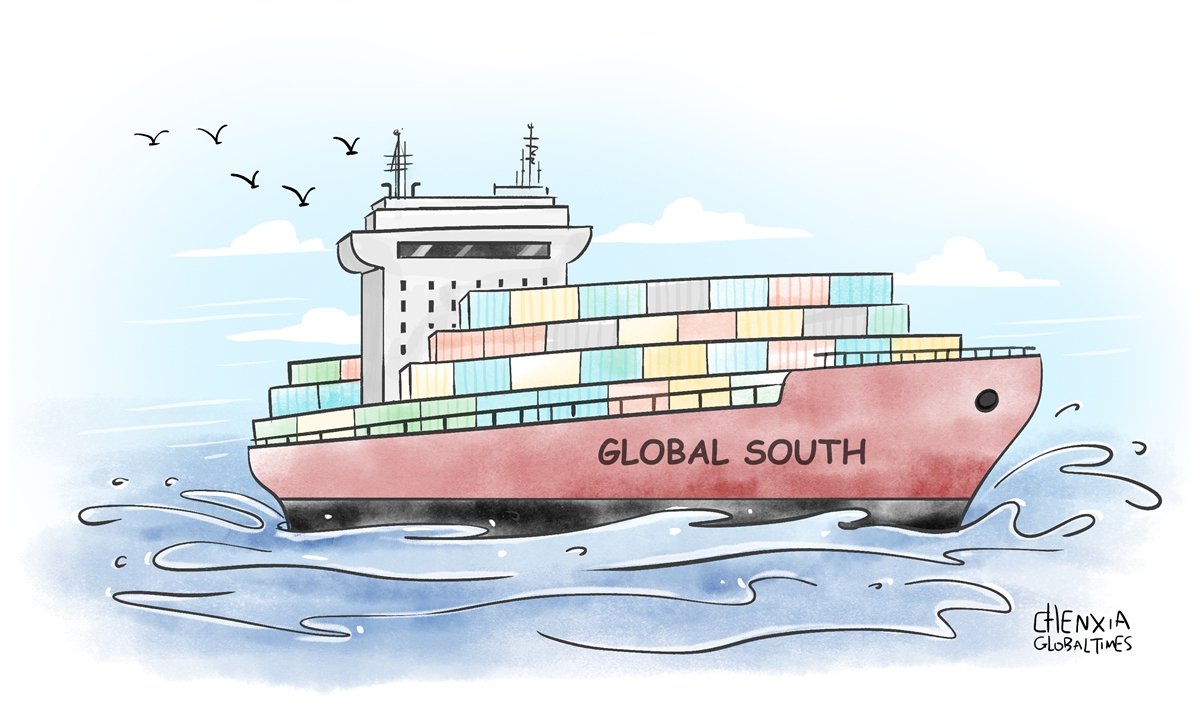
Illustration: Chen Xia/Global Times
A widely disseminated online chart comparing China's exports to the Global South and the Global North has offered a new perspective for people to see the ongoing realignment of global trade. For a long time to come, the realignment may continue.
The chart, uploaded by Western commentator David Goldman on Tuesday on social platform X, shows a shift in China's export patterns toward the Global South. Exports to the Global South are rising, while those to the Global North are falling. Goldman said "this probably is the biggest economic story of the 21st century."
It's not clear if the chart is accurate, but the trend it presents is roughly consistent with people's expectations and understanding of the trade realignment. A restructuring of global industry chains seems to have accelerated amid the legacy of the pandemic, stubborn inflation, sluggish external demand, trade protectionism and the "decoupling" maneuver of the US.
There is a rising need for China, the world's largest manufacturing hub, to stabilize and realign its export-oriented economy. Many believe that Chinese companies should focus more on opportunities in emerging markets and strengthen cooperation with the Global South countries.
In 2023, China's exports of "the new three" - electric vehicles, lithium-ion batteries and solar cells -
passed the mark of 1 trillion yuan for the first time, growing 29.9 percent year-on-year to 1.06 trillion yuan.
It was a milestone moment, as China has gained a competitive advantage in technology-intensive industries, diversifying away from dependence on labor-intensive exports. Technology-intensive exports will play an increasingly important role in China's economic development. But Western countries may impose more trade barriers, as Chinese-made products are becoming increasingly competitive, leading to a rise of trade protectionism within the Western world.
An urgent problem facing Chinese exporters now is how to explore new markets in the Global South.
The emerging market universe is diverse and defies a uniform narrative, but it has enormous potential. Goldman said "Billions of people are being absorbed into China's economic sphere." They are poor now, but that will change and the macro effect will be gigantic. "We are standing in front of a tsunami. Why don't we have a plan to compete with China for economic influence in the Global South?"
China has never been afraid of competition. However, if developed Western economies continue to use "national security" and anti-dumping and anti-subsidy investigations as excuses to crack down on Chinese companies, then Western companies will find it difficult to enhance their competitiveness relative to Chinese companies in the Global South market.
Chinese companies will focus more on the Global South, which may become a long-term trend and affect the realignment of global trade for a long time to come. In this process, Chinese investment will promote local industrialization and raise local incomes. Income growth will stimulate local consumption, forming a virtuous cycle between exports, investment and consumption.
Hopefully Western companies can also join the competition and pay more attention to the Global South market. Western countries should further open their own markets and continue to promote free trade and globalization. Only in this way can they share dividend from the future international trade.
The author is a reporter with the Global Times. bizopinion@globaltimes.com.cn




